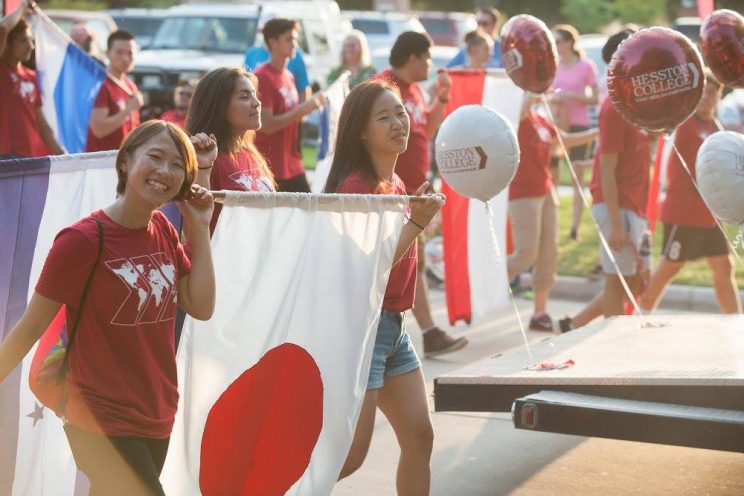HC international student population grows despite national decline
By Mackenzie Miller – Horizon Editor-in-Chief

Hesston College has always been an exception to the norm.
We’re a two-year school, but we’re not a community college. We’re all about liberal arts, but we’re known for nursing and aviation. We offer Associate’s degrees…and now Bachelor’s.
A school like ours may be rare. But a school whose international student population grows in the midst of murky immigration policy? That makes Hesston an outlier.
As outliers we gained 10 international students this school year while the number of undergraduate international students in the United States fell by 2.2 percent.
According to Director of International Admissions John Murray, that’s a big deal.
“In the people that I have talked to, we are the only college that has actually increased over the last year,” Murray said.
It’s looking pretty bad for other schools.
“There are universities who have lost 20 to 40 percent of their international student populations.”
Murray, who’s only a few months into his new position as director says the number is thanks to the relationship-building that Hesston College prides itself on.
“It doesn’t hurt that we are a small school in a rural community away from the craziness on the coasts,” Murray said. “We are viewed as a safe place that has a reputation of nurturing and supporting our students.”
President Joe Manickam said this steady rise in enrollment is a sign of good work done and, as one who is focusing much of his first months in office expanding the college on an international scale, Manickam also sees this as a sign of good things to come.
As government policy regarding immigration and student visas is still unstable, Manickam notes, “The reason why our numbers are going up is because we have worked more intentionally at recruitment and we are working through personal connections and alumni.”
But this outlying statistic does not come without some worry for the future of international relations.
“I am very concerned about where our nation is heading,” Manickam said. “I am also very concerned for our international faculty, and students in terms of their safety. As we start to hear other school’s struggling, the last thing we need is to jeopardize what we are doing here.”
In his international travels, Manickam still meets those who ask, “Why does America hate us so much?” Murray also chimed in on this concern.
Parents always ask us about the safety of America and the location of the college, Murray said.
Yet Manickam says this will not keep him from pushing “the pedal to the metal” in terms of international recruitment.
“We are not giving up, but we do need to be much more aware of the implications that these statistics bring.”



